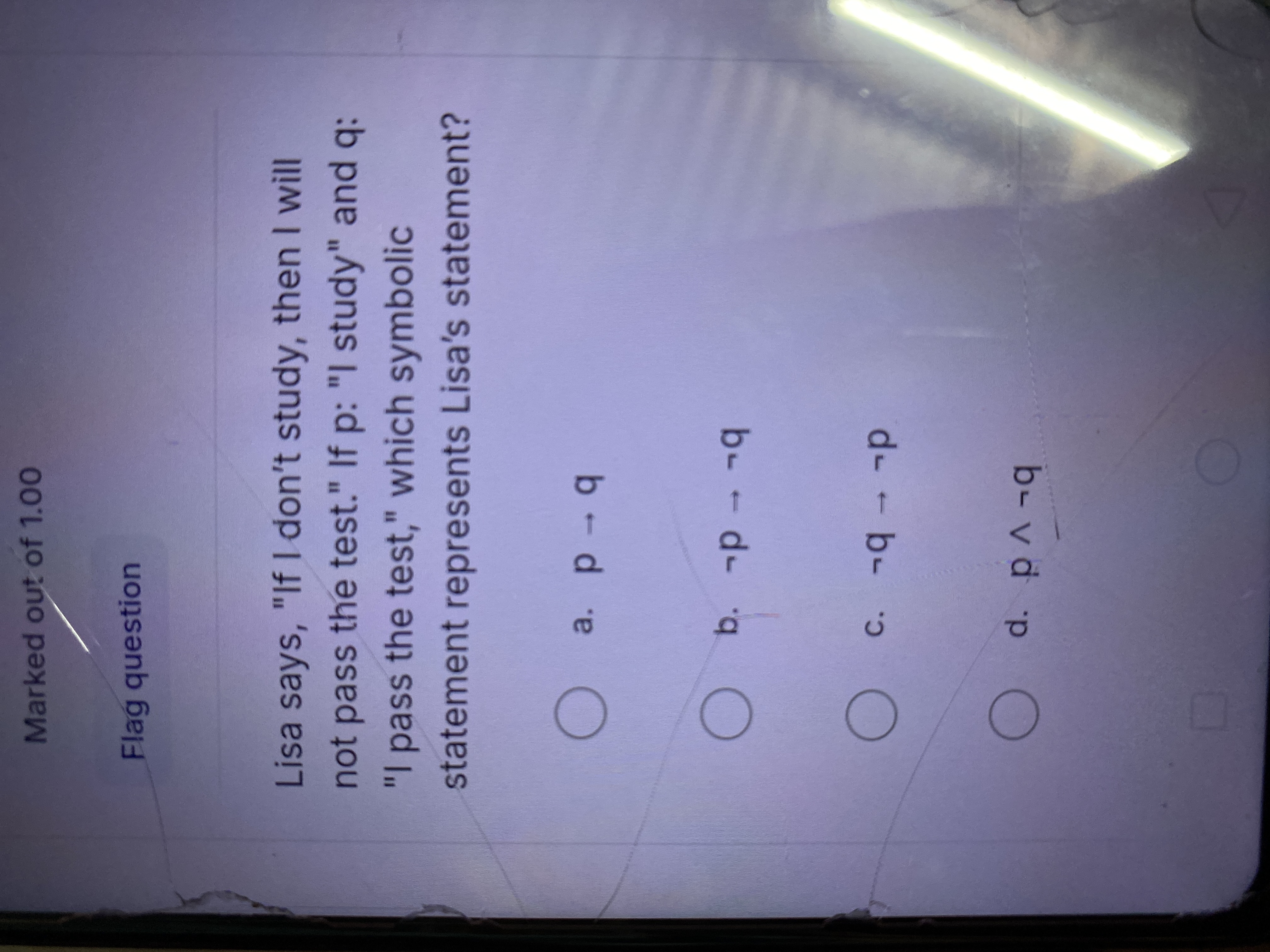Lisa says, 'If I don’t study, then I will not pass the test.' If p: 'I study' and q: 'I pass the test,' which symbolic statement represents Lisa’s statement?

Understand the Problem
The question asks for the correct symbolic representation of Lisa's statement using logic. Specifically, it wants to translate the conditional statement 'If I don’t study, then I will not pass the test' into symbolic form, given the definitions of p and q.
Answer
The symbolic representation is: $$ \neg p \rightarrow \neg q $$
Answer for screen readers
The correct symbolic representation of Lisa's statement is:
$$ \neg p \rightarrow \neg q $$
Steps to Solve
-
Identify the given statements
Let ( p ): "I study"
Let ( q ): "I pass the test"
The statement can be reformulated as: "If I don’t study, then I will not pass the test," which translates to ( \neg p \rightarrow \neg q ). -
Translate the conditional statement
The structure of the statement "If A, then B" can be expressed in symbols as ( A \rightarrow B ). Therefore:- ( A = \neg p ) (not studying)
- ( B = \neg q ) (not passing the test)
So, we have: $$ \neg p \rightarrow \neg q $$
-
Select the correct symbolic representation
Review the options provided:
a. ( p \rightarrow q )
b. ( \neg p \rightarrow \neg q )
c. ( \neg q \rightarrow \neg p )
d. ( p \land \neg q )The correct choice is ( b. \neg p \rightarrow \neg q ).
The correct symbolic representation of Lisa's statement is:
$$ \neg p \rightarrow \neg q $$
More Information
This type of statement is often referred to as a contrapositive in logic. Understanding conditional statements and their negations is essential for accurately interpreting logical expressions.
Tips
- Confusing ( p ) and ( q ): Make sure to correctly identify which part of the statement corresponds to ( p ) (studying) and which to ( q ) (passing the test).
- Forgetting the negation: It's crucial to correctly apply negation to both parts of the statement.
AI-generated content may contain errors. Please verify critical information